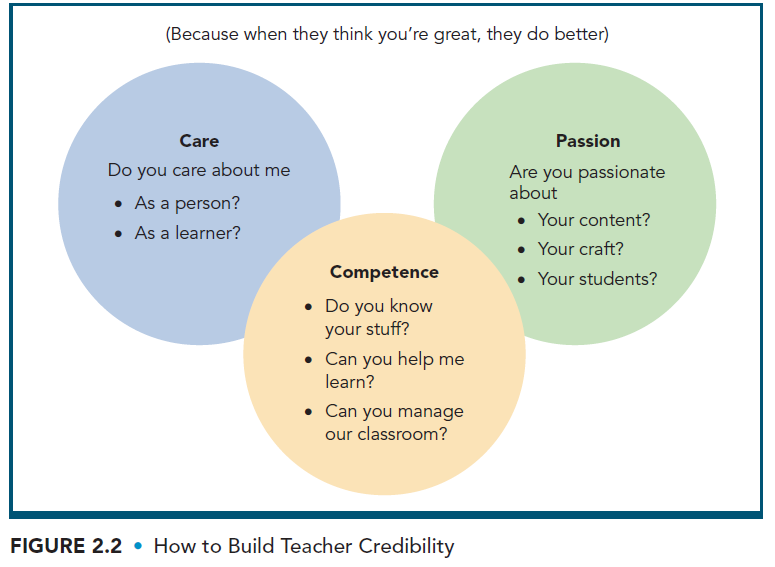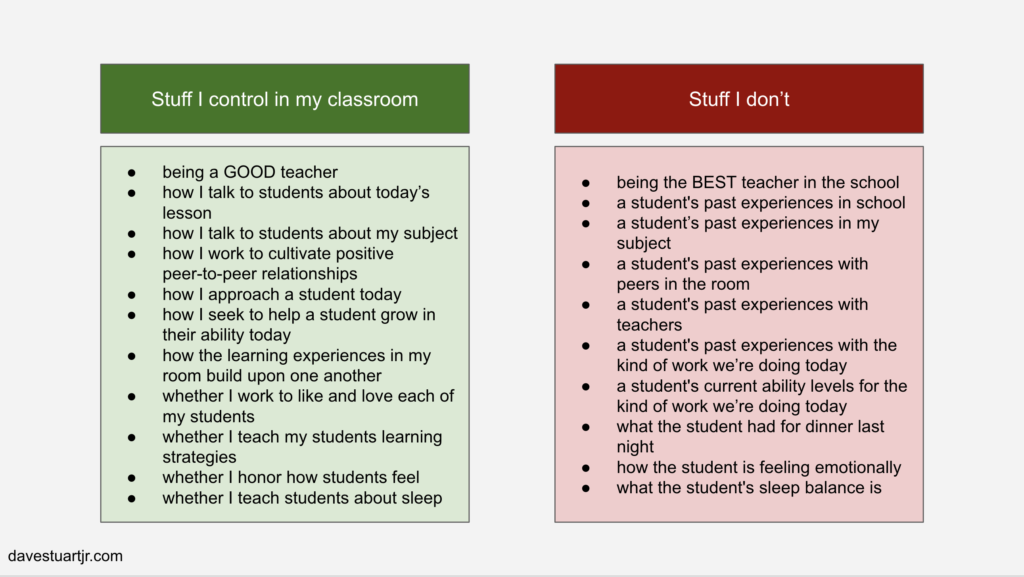Okay — thanks for the honesty.
If you're seeing lots of student apathy (and by “seeing” I mean feeling its weight on your soul), five key beliefs work will help you regain agency and impact. This isn't silver bullet stuff; it's just a low-stress, high-yield methodology for thinking and doing something about student motivation obstacles.
Pick this one

The strongest place to start creating a more motivation-conducive classroom or school is teacher credibility. If you can move all your students toward believing that you are good at your job, just about everything will move toward becoming easier.
- From a position of credibility, you can cultivate the rest of the five key beliefs more effectively.
- Credibility is the invisible force that animates the work of our greatest writer-practitioners.
- Word of teacher credibility spreads — so the longer you teach from a position of credibility, the more likely it is that your students will think you're a credible teacher before they walk into the room.
- On John Hattie's Visible Learning list, teacher credibility is right near the top, and, if you were to re-order Hattie's list based on an effect-size-to-effort-required ratio, credibility would be on top. (My opinion.)
Of the five key beliefs, then, teacher credibility is the foundation. If you're overwhelmed, just focus on improving your credibility. One signal at a time.
So, how do we improve our Credibility?
It's one of those simple-but-not-completely-easy things.
Here's what you do: send lots of signals. Specifically, signal to students that you Care, that you're Competent, and that you're Passionate. Care, Competence, Passion. CCP.

What do you mean, signals?
In a given context, signals tell us what kind of story we're in. That's not my language — it's Dan Coyle's in Culture Code. Remarkable cultures rest on just a few skills, according to Coyle. And one of them, it turns out, is creating high-purpose environments. And how do you do that? Send an array of consistent signals telling a consistent story.
The story we're telling with Care, Competence, and Passion signals is a really fun one: the teacher in this classroom is good at their job. She knows what she's doing. He can take me someplace with learning that I've not been yet. She can help me grow.
That's a story a Credible teacher tells — not verbally, but with signals.
Before we close, some quick examples of Care-Competence-Passion (CCP) signals:
- Taking 30 seconds to try to make an individual student feel valued, known, or respected
- Using a simple tracking system to ensure that you take those 30 seconds on a regular basis (in a secondary classroom, I recommend at least once per student every 2-3 weeks)
- Giving a student specific and helpful feedback on their work in your class
- Handling awkward or potentially tense classroom situations with aplomb
- Establishing and reinforcing basic classroom procedures that avoid the wasting of time (e.g., what to do at the start of class)
- Providing feedback that is useful and quick
We could go on and on. And I will, in some brief, practical posts that follow this one. If you're not subscribed, please do subscribe right here.
Best,
DSJR
P.S. Isn't this all kind of overwhelming, Dave?
It really can be. But it DOES NOT have to be.
Make sure your focus is in spots where you're the sole driver. You'll be so much happier. The image below helps me sometimes when I need that reminder.

Leave a Reply